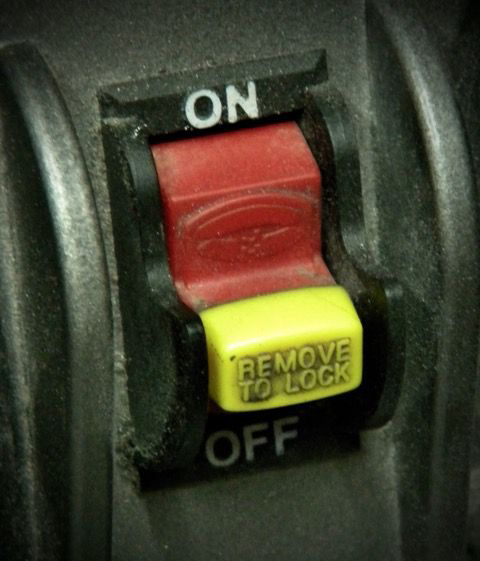 |
One minute everything’s great. You and the family have had a near perfect afternoon in the city. The next second, with no warning, things turn violent. You’re facing an armed threat. The only way to stop the danger is with more aggressive violence. You punch the “Fight” button to “ON” to solve the problem. When that threat is down, the “Violent” button has to be toggled to “OFF.” In theory, this sounds simple; turn it on then turn it off. As usual, there’s a world of difference between theory and application.
Sudden attacks are the norm. By paying attention – environmental awareness – possible trouble is identified prior to the danger. Avoidance is the best tactic. Escape is in order when danger appears but not directed towards you and yours. The confrontation is won through non-participation. Or, the hazard develops with enough time to prepare a defense. You’re working through Jeff Cooper’s Color Code of Awareness. Staying alert keeps us out of trouble or, when unavoidable, creates time to arrange your response.
“Sudden” danger is unexpected or unforeseen. Instead of unfolding, revealing details slowly, the event explodes. Avoiding or escaping are not options. There’s no time to prepare. An immediate response is required, with enough aggression to ensure stopping the threat(s). Turn the violence “ON” – now.
With training, practice and the right “heart” – willingness – most can turn the violence on. Just keep in mind that once you’re committed, you hold nothing back. Force can only be stopped with more force. Although the force used is “defensive,” in response to an unprovoked, unwarranted attack, you’re applying aggressive violence. There are no half-measures, or acting then waiting to see how the threat responds. The objective is to stop the attack as efficiently as possible. The longer the fight lasts the greater chance the threat wins.
Once the threat is stopped, or gone, the violence must be turned off, as suddenly as you turned it on. Ending the violent part of your defense as soon as the attack has been stopped is difficult. This is especially true if you let emotions take over. Once fear or anger is in charge, we tend to lose control. It’s not uncommon to see video of the “good-guy” chasing the bad guy in order to shoot them more or, continuing to fire even after the threat is down. At this point your defense of what you did and why isn’t going to hold up well in court.
Turning off the violence doesn’t mean that the fight is over. Once the immediate danger is over it’s time to be scanning – there may be additional threats – checking on the other members of your team, contacting authorities and actions like moving to cover or a safer location. At this point things have slowed way down. Your “operational tempo” is more administrative.
When do you turn the violence “ON” then “OFF?” Only you can decide that. The “when” can only be answered “then.” Remember, it’s all about cycling through the O.O.D.A. Loop. As I always say, “Fighting is problem solving at high speed.” Deciding when to stop applying violence is just as important as making the decision to apply violence.
Tiger McKee is director of Shootrite Firearms Academy. He is the author of The Book of Two Guns, AR-15 Skills and Drills, has a regular column in American Handgunner and makes some cool knives and custom revolvers. Visit Shootrite’s Facebook page for other details.